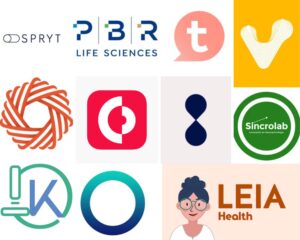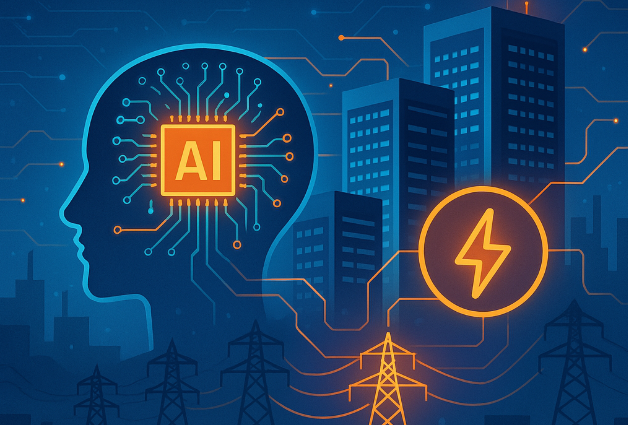In recent years, generative AI has advanced significantly, moving from specialized technology to effective tools with broad applications across multiple industries. Multimodal AI models, compact language models, autonomous agents, open models, and cloud-native solutions are a few of these innovations. In this article, we will examine the most significant generative AI models that are influencing the future and emphasize their salient characteristics, practical uses, and revolutionary potential:
- Multimodal AI Models
The most advanced forms of generative AI are multimodal models. Multimodal AI combines text, visuals, and audio to provide a more thorough comprehension of information, in contrast to standard models that only handle one kind of data. This all-encompassing strategy improves judgment and produces engaging user experiences.
One such example is the December 2023 release of Google’s Gemini 1.0. This model handles many data types with ease, which is an example of its adaptability and integration. Gemini 1.0’s versatility and scalability are demonstrated by its ability to run on a variety of platforms, including mobile devices and data centers. Its sophisticated thinking and problem-solving abilities even outperform those of human specialists, demonstrating the revolutionary potential of multimodal artificial intelligence.
- SLMs, or small language models
SLMs, or small language models, are becoming more and more popular due to their particular uses and unique characteristics. The development of domain-specific language models suited to certain business requirements is utilizing these models more and more. They provide a targeted strategy that can beat more expansive models in specific benchmarks.
The Microsoft Phi-2, which was unveiled in December 2023, is a shining example of this development. Phi-2, which has 2.7 billion parameters, outperformed larger models on several benchmarks after being trained on 1.4 trillion tokens of synthetic data. Its superior performance in language interpretation, reasoning, and coding highlights the increasing significance of compact, specialized language models.
- Autonomous Agents
One may argue that autonomous agents represent a somewhat higher level of AI functioning. These are autonomous software applications that can function, learn, and adjust their responses to different situations. As a result, they are self-acting to achieve their goals. They are destined to revolutionize user interfaces and corporate operations.
The January 2024 release of Smart Eye’s Emotion AI serves as an example of the possibilities of autonomous agents in automotive technology. Emotion AI facilitates the identification of drivers’ emotions by in-car aides with the use of modern automotive sensing and LLM. This invention improves driving experiences by making driving more personalized, intuitive, and safe.
- Open Models
Emerging open models are confronting generative AI solutions. These models make use of huge language models that are open-source, and their architecture and componentry can be adjusted or expanded to meet the specific needs of the application. They are a step toward the development of Artificial General Intelligence (AGI) and have numerous uses in a variety of industries.
The July 2023 release of Microsoft’s Llama 2 and Meta is a prime example. Llama 2, which is now a part of the Azure AI model catalog, provides developers with a clear pipeline for using generative AI efficiently. It emphasizes how open models and tradition are essential to increasing the efficacy of AI systems, as demonstrated by its integration with Microsoft Azure.
- Cloud Native Solutions
Cloud-native infrastructure provides scalable and effective environments for AI workloads, it is essential for the development of generative AI. Large language models (LLMs) and efficient architectures and tools for AI applications are being supported by cloud platforms as they develop.
In August 2023, 78% of businesses either had implemented cloud computing or planned to do so as part of a technology upgrade and the integration of intelligence into business applications, according to EY. Thus, leveraging cloud technologies is essential to avoid repeating mistakes with traditional CRM systems and to fully utilize the potential of generative AI.
- StyleGAN and StyleGAN2
The field of generative adversarial networks (GANs) has been completely transformed by StyleGAN and StyleGAN2, enabling the production of photorealistic images. Compared to the earlier GAN, these models enhanced image quality and the range of image changes and introduced the idea of style vectors.
Several uses for StyleGAN and StyleGAN2 include graphical user interfaces, logo design, and the healthcare sector, among others. Their exceptional realism capabilities have opened up new opportunities for virtual content creation and experience design.
- Contrastive Language-Image Pretraining (CLIP)
By combining textual and visual input, Contrastive Language-Image Pretraining (CLIP) is a multimodal learning innovation. This method bridges the gap between text and visuals by training models on large datasets of photos linked with textual descriptions.
The StableRep+ version and technological advancements have become some of the industry standards for AI training efficacy. This is especially important for the now-in-use CLIP text-to-image generating abilities, which are contextually most useful in the healthcare industry and rely on the precise integration of a large amount of textual and visual data.
- Transformers for Vision
By utilizing the transformer design, the Vision Transformer (ViT) has affected computer vision tasks. ViTs have outperformed typical CNNs, which feed images as patches, extending the methods to tasks including detection, segmentation, and classification.
The goal of current research and upcoming developments like FastViT is to find methods to maximize asset memory consumption and ViT. Apple’s FastViT, which was introduced in August 2023 and offers high speed with lower latency in operation on mobile devices and desktop GPUs, serves as an example of this development.
- Hybrid Models
Especially in the field of medical imaging, hybrid models—which integrate generative and predictive AI techniques—are becoming more and more popular. More importantly, these models tackle a variety of problems by fusing creative problem-solving with precise future event prediction.
The extended collaboration between Lenovo and NVIDIA, which was revealed in October 2023, demonstrates the possibilities of hybrid models. Their innovative technologies enable personalized applications and the use of generative AI, enabling AI to compute from edge to cloud.
- Edge Computing and On-Device AI
Real-time, localized processing made possible by edge computing and on-device AI is revolutionizing generative AI. By enhancing privacy, lowering latency, and creating new, highly impactful use cases, the implementation of AI models and apps revolutionizes how smartphones and IoT devices are used.
The LPDDR5X memory from Micron Technologies, which was revealed in October 2023, is the best example of edge computing. This low-power memory offers benefits including reduced battery consumption and increased computational speed, and it is designed specifically for Qualcomm’s Snapdragon 8 Gen 3 platform to accelerate the performance required for edge-meshed generative AI.
In summary
The rapid growth and expanding capabilities of AI technology are highlighted by the creation of these ten significant generative AI models. These developments are shaping the direction of artificial intelligence, from models that combine various data types to hybrid models that combine generative and forecasting techniques. As these technologies develop, they will spur innovation across industries, enhancing user experiences and altering how businesses operate.















